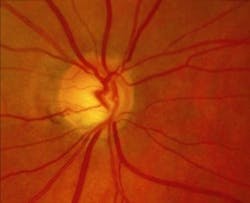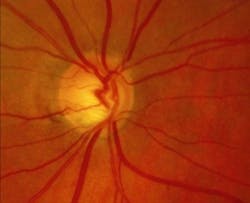European project to develop next-gen OCT systems for glaucoma diagnosis
A newly launched project dubbed GALAHAD (which stands for Glaucoma – Advanced, Label-free High Resolution Automated OCT Diagnosis) will develop and apply research into high-resolution optical coherence tomography (OCT) for glaucoma diagnosis.
Related: OCT angiography is shown to detect early-stage glaucoma and its progression
Glaucoma is a major cause of blindness in aging people, and is characterized by irreversible damage to the optic nerve head caused by increased intraocular pressure. Current screening and basic diagnostic methods for the eye disease involve intraocular pressure measurement, visual field tests, and detection of structural damage to the optic nerve head and retinal nerve fiber layer. However, these methods have high rates of false-positive or -negative results because of the impossibility of in-depth analysis of optical nerve head damage, given the poor resolution of current optical technologies.
Recognizing these issues, the GALAHAD project targets the critical need for better systems to diagnose glaucoma. OCT is a leading candidate, but requires ~1 μm axial resolution well beyond the 3–5 μm resolution of today's commercial systems. So, the project aims to develop a label-free, compact, and easy-to-operate high-resolution diagnostic OCT system that will use submicron, ultra-high-resolution, polarization-sensitive OCT (UHR PS OCT). Its key breakthrough elements include a low-cost multiband supercontinuum light source, as well as automated glaucoma screening algorithms that allow non-expert operators to perform screenings.
With the GALAHAD project's system, it is expected that false-positive and -negative screening results will dramatically reduce, decreasing the number of patients suffering from glaucoma-related disability. The project is being driven by companies and manufacturers of OCT systems; guided by requirement specifications; and validated by clinical and experimental ophthalmologists in their clinical settings.
The project, which began in December 2016, is being funded as part of the EU Horizon 2020 program. Project partners are Gooch & Housego (Ilminster, Somerset, England), Optos (Dunfermlime, Fife, Scotland), NKT Photonics (Birkerød, Denmark), Ibsen Photonics (Farum, Denmark), Vivid Components (Torquay, Devon, England), the Technical University of Denmark (Lyngby, Denmark), the Polytechnic University of Valencia (Valencia, Spain), Gloucestershire Hospitals NHS Foundation Trust (Gloucester, Gloucestershire, England), the University of Münster (Münster, Germany), and the Capital Region of Denmark (Hillerød, Denmark).

